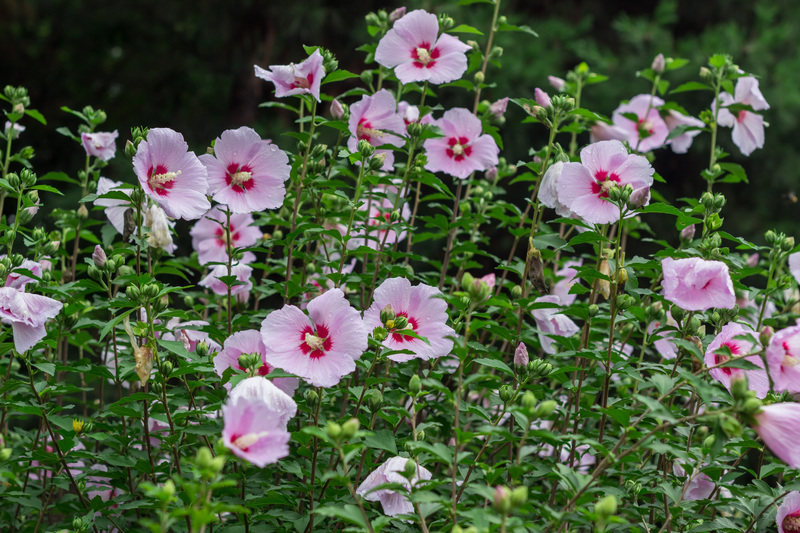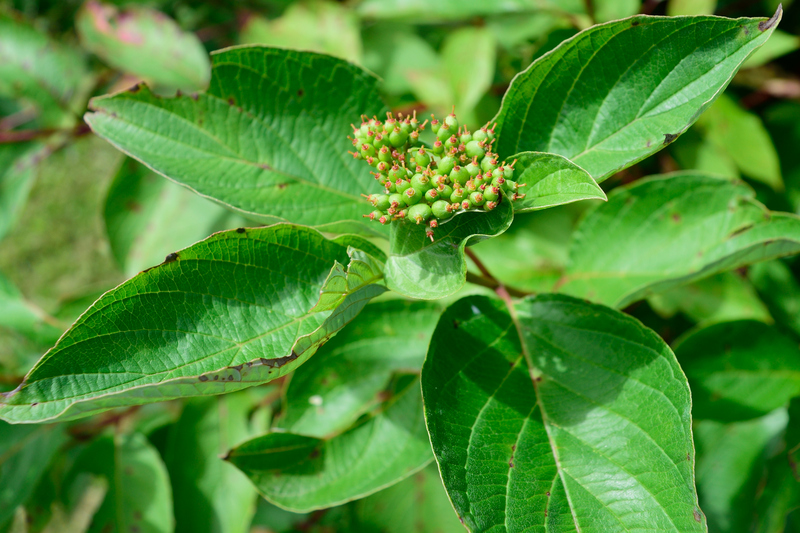Expert Tips for Cultivating Tropical Plants in Your UK Outdoor Space
Are you dreaming of transforming your garden into a lush, tropical paradise despite the famously unpredictable UK weather? Cultivating tropical plants outdoors in the UK might sound challenging, but with the right knowledge and a few expert tips, it's more achievable than you might think. In this comprehensive guide, we'll explore how to grow vibrant, exotic plants that bring a taste of the tropics to your British home, covering everything from plant selection and soil preparation to microclimates, watering schedules, and winter protection.
Why Choose Tropical Plants for Your UK Garden?
Tropical plants are renowned for their bold shapes, lush foliage, and vibrant colours. Adding them to your UK outdoor space instantly invokes the feel of distant jungles and sun-soaked islands--a true escape in your own backyard. Incorporating tropical plants in your garden can create a dramatic focal point, add architectural interest, and attract wildlife such as birds and pollinators.
- Year-round interest: Many tropical plants offer evergreen leaves or late-season flowers, ensuring that your garden stays lively even through autumn.
- Unique textures and forms: Large leaves, bold colours, and striking flower shapes provide both contrast and charm.
- Low maintenance: Some tropical species are surprisingly resilient and once established, require little care.

Understanding the UK Climate: Challenges and Opportunities
While cultivating exotic plants outdoors in the UK presents some challenges--like lower sun intensity, cooler temperatures, and changeable weather--recent warm summers and milder winters have made it increasingly possible. The UK's maritime climate offers humidity that many tropical species love. Moreover, with the right selection and care, plenty of tropical plants can adapt to the local conditions.
Microclimates: Your Secret Weapon
One expert tip is to exploit microclimates within your garden. Microclimates refer to small pockets of warmer, more sheltered ground near south-facing walls, patios, or under tree canopies. These areas retain heat and shield delicate plants from harsh winds and frost, providing the perfect spot to try slightly tender exotics.
- Grow tropical plants close to house walls to benefit from residual heat.
- Use fences, evergreen hedges, or larger plants as windbreaks and insulation.
- Add mulch to protect roots and regulate soil temperature.
Choosing the Right Tropical Plants for Outdoor UK Cultivation
Selecting suitable tropical or subtropical plants is paramount. Some are ready to thrive in the British outdoors, while others require extra protection or container growing. Here's a list of top-performing species for UK gardens:
- Trachycarpus fortunei (Chusan or Windmill Palm): Exceptionally hardy for a palm, tolerates UK winters down to -15?C with minimal shelter.
- Fatsia japonica (Japanese aralia): Glossy 'jungle' leaves with excellent shade tolerance and hardiness.
- Bamboo: Particularly Phyllostachys species, brings height, sound, and texture to the garden.
- Banana plant (Musa basjoo): Large, dramatic leaves; dies back in harsh winters but quickly regrows in spring.
- Cordyline australis (cabbage palm): Palm-like appearance, great for coastal gardens, good resistance to cold.
- Canna lilies: Vibrant flowers and lush foliage throughout summer; may need tubers lifted post-autumn.
- Hedychium (Ginger lily): Exotic flowers, best in mild regions and well-protected gardens.
- Tree ferns (Dicksonia antarctica): Iconic ancient woodland look; needs regular watering and protection over winter.
Other exotics to consider: Tetrapanax, Schefflera, Arbutus, Gunnera, and Eucomis are also popular for adding a lush, tropical vibe.
Soil Preparation for Tropical Plant Success
A key tip for cultivating tropical plants outdoors in the UK is preparing your soil. Most tropical plants favour:
- Rich, well-drained soil: Mix in generous compost or well-rotted manure to boost nutrients.
- Moisture retention: Add leaf mould or coconut coir to help soil hold water without becoming soggy.
- Good drainage: If you have heavy clay, incorporate horticultural grit or plant in raised beds.
- Right pH: Check individual plant requirements; many tropical species are tolerant of neutral to slightly acidic soils.
Mulching for Moisture and Warmth
Mulching is essential when establishing exotic plants in the UK outdoors. A thick layer (around 5cm) of bark chips or leaf mould helps insulate roots in winter and keeps soil moist through summer.
Ensuring Proper Light and Shelter
Most tropical plants prefer bright, indirect sunlight or dappled shade, just like their native forest habitats. While some species thrive in full sun, always check individual requirements and avoid planting tender exotics in frost pockets or exposed, windy sites.
- Plant taller species (bamboo, palms) to provide shelter and partial shade for more delicate underplantings.
- Use garden structures, pergolas, or shade sails for extra protection in particularly exposed gardens.
Watering and Feeding Your Outdoor Tropical Plants
Getting the watering right is vital for lush, healthy foliage and vibrant flowers. Tropical plants dislike drought, but overwatering can be equally damaging.
Top Watering Tips
- During spring and summer, water deeply at the base once or twice a week--avoid frequent light watering.
- Check moisture levels before watering; if the soil's damp, wait until it dries slightly.
- Potted tropicals often dry out faster; monitor containers regularly.
- Reduce watering in autumn and winter, when most exotics are dormant.
Feeding Recommendations
- Feed with a balanced, slow-release fertilizer in spring for leafy growth.
- Potassium-rich feeds encourage robust stems and flower production.
- Supplement with seaweed feed or liquid foliar sprays for extra trace minerals.
Frost and Winter Protection: Keeping Your Tropicals Thriving Year-Round
The biggest challenge in growing tropical plants outdoors in the UK is winter. But with proper planning, many exotics can survive and thrive.
Hardiness Ratings and Planning
- Research each plant's minimum temperature tolerance before buying.
- Group less hardy species together for easier protection in cold snaps.
Winter Protection Techniques
- Mulch root zones with thick layers of straw or bark in late autumn.
- Wrap stems and crowns of bananas and tree ferns with fleece or hessian for insulation.
- Raise pots onto feet and move to sheltered positions for frost protection.
- Consider temporary plant cloches or cold frames for smaller, delicate exotics.
Remember, even hardy plants benefit from extra protection in harsh winters--especially during extended freeze-thaw cycles or prolonged wet.
The Art of Combining Tropical Plants for Dramatic Impact
For that true 'jungle' look, pair broad-leaved plants with accent species in contrasting textures, heights, and colours. When arranged creatively, your outdoor space will feel immersive and exotic all year round.
Layering Heights
- Use tall focal points: tree ferns, palms, bamboo.
- Fill middle layers with cannas, ginger lilies, large hostas, and fatsias.
- Edge beds with trailing begonias, heucheras, or ferns for softness.
Seasonal Interest
- Plant spring bulbs like Camassia or Eucomis (pineapple lily) for early colour.
- Add autumn-flowering exotics such as Hedychium for late-season appeal.
Container Gardening with Tropical Plants
If your site is cold, wet, or exposed, or you're keen to experiment with less hardy exotics, try growing tropical plants outdoors in containers. This approach allows you to move plants under cover in winter and enrich soil with bespoke mixes.
- Choose large, frost-resistant pots with good drainage.
- Water and feed more frequently, as containers dry out faster.
- Combine upright and trailing tropicals for maximum visual impact.
- Group pots together for a microclimate boost.
Common Problems and Troubleshooting
Pests and Diseases
Tropical plants can fall prey to familiar UK garden pests like slugs, snails, and aphids. To protect your jungle:
- Hand-pick slugs or use wildlife-friendly traps around hostas and bananas.
- Spray aphids with soapy water or introduce beneficial predators (like ladybirds).
- Keep foliage dry to prevent fungal diseases; water the base rather than leaves.
Yellowing Leaves and Poor Growth
Signs of nutrient deficiency, overwatering, or exposure to cold can lead to yellow, limp foliage.
- Check soil moisture--adjust as needed.
- Feed with trace element-rich fertilizers.
- Move potted plants to more sheltered spots during cold snaps.

Frequently Asked Questions on Tropical Plant Gardening in the UK
Can I leave tropical plants outside all year in the UK?
It depends on the plant species. Hardier options like Trachycarpus fortunei and Fatsia japonica can generally survive year-round, but most will need winter protection such as mulching, fleece wrapping, or moving indoors.
What are the easiest tropical plants to grow outdoors in the UK?
For beginners, try Hardy palms, Fatsia, Musa basjoo, bamboo, and cordylines. They tolerate the British climate reasonably well and require less intensive care than more tender species.
How do I make my UK garden look tropical?
Layer plant heights, choose bold-leaved species, incorporate water features, and use stone/wood to create a jungle ambience. Regular feeding and mulching help maintain lush growth and a verdant appearance.
Conclusion: Create Your Own Tropical Oasis in the UK
With a thoughtful approach, strategic planting, and a little TLC, cultivating tropical plants in your UK outdoor space can be richly rewarding. By harnessing microclimates, choosing resilient species, maintaining moisture and nutrition, and protecting plants through winter, even the most temperamental British garden can erupt with vibrant, exotic flair.
Embrace these expert tips, experiment boldly, and soon you'll enjoy a backyard escape filled with the lush textures and brilliant colours of the tropics--even under classic British skies!